1982 BMW Observer Coupé - unique glass-roofed 635CSi E24
In the early 1980s, a designer sought a calling card. With backing from The Observer newspaper, this unique glass-topped BMW 635CSi E24 show-car was the result.
Words Richard Heseltine
Photography GF Williams
BMW Observer Coupé — Unique glass-roofed 6-series E24 explored
THROUGH THE ROOF
Here in this corner of the Home Counties, tailgating seems to be the order of the day, as does aggressive overtaking. Yet we are too chilled to care. It’s steamily hot in here, but everything else is cool. It isn’t every day that you get to drive a concept car. This is a BMW 6-series E24, the prototype for a string of conversions that didn’t happen, but it was every bit the media magnet in its day. The Observer Coupé may not resonate in the here and now, but there was a time when it was considered cutting edge.
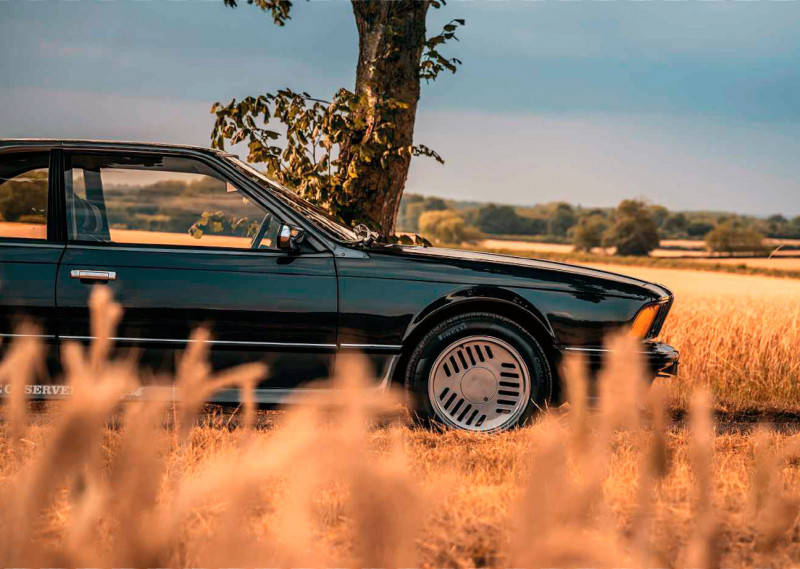
‘BESPOKE SPOILERS, SIDE-SKIRTS, STICKON GRAPHICS AND THE CENTRA TYPE 6 ALLOY WHEELS CHAIN IT TO THE 1980S’
The car was conceived by design engineer Mike Gibbs, whose CV included spells in the defence industry prior to acting as an agent for freelance clay modellers. He formed the MGA design consultancy in 1979, a Coventry start-up that initially acted as a master model maker for manufacturers. A big-picture man, Gibbs was keen to make the leap to creating a one-stop shop for mainstream carmakers, taking a project from rendering to finished article. A show car would act as a calling card, and the idea for ‘Special Project M3’ formed in March 1982.
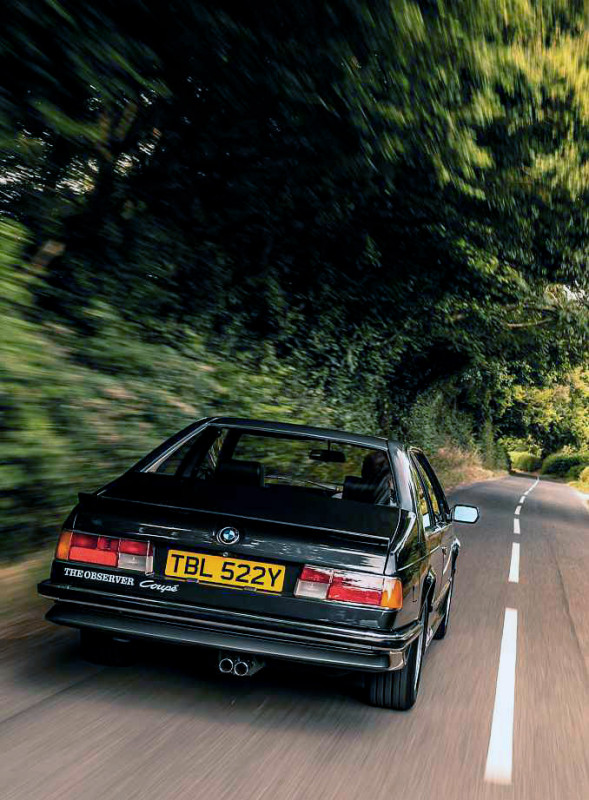
Gibbs envisaged a car based on a 6-series BMW, and by June of that year he had come up with a working brief. All he needed was a backer. John Anstey, editor of The Telegraph Sunday Magazine, was approached first. It would have been a logical fit given that Anstey had been something of a mouthpiece for car design and technology, having persuaded the publisher to fund construction of the Bertone Pirana in 1967. It also sponsored a stand at the British International Motor Show, which promoted independent stylists for much of the 1970s.
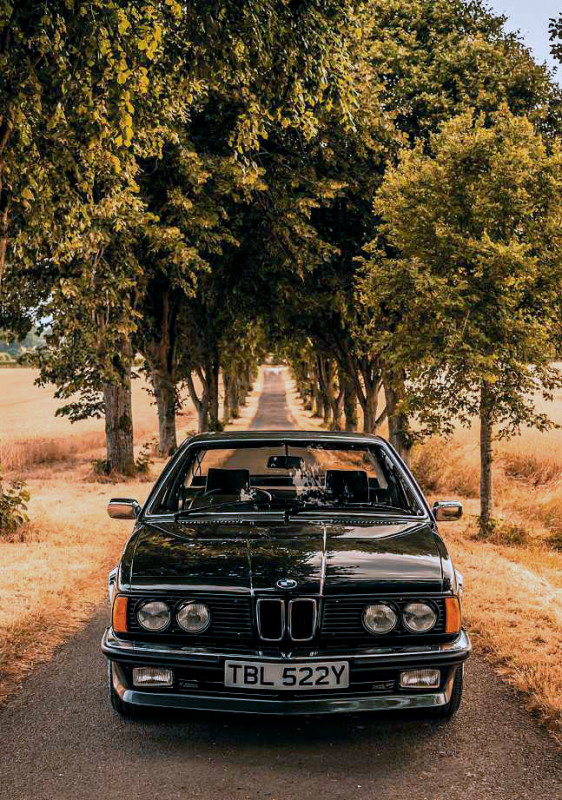
Anstey was receptive, as was BMW, which agreed to donate a E24 635CSi. However, as sifting through a box-file of correspondence between the various parties reveals, there was a failure to communicate. Passive aggression morphed into aggressive aggression as Gibbs and Anstey blamed each other for delays in reaching a decision. Nine weeks were lost before the potential partners cried off; Gibbs then approached The Sunday Times Colour Magazine before BMW GB’s marketing manager engineered a meeting with The Observer Sunday Magazine.
‘THE OBSERVER BMW WENT FROM SIGNED-OFF RENDERINGS TO COMPLETED CAR IN JUST 3½ MONTHS’
It was a case of third time lucky, agreement being reached in late May. Reading through paperwork from the time, it seems that matters lagged thereafter, which was an issue given that the car was to have been unveiled at the British International Motor Show in October. Not only that, it needed to be photographed and committed to print before the event. An undated internal document states that the target was early September, with The Observer expecting to run a series of articles beforehand. Autocar was also to get its hands on the car a fortnight before the covers were lifted in Birmingham. Memoranda from June 1982 suggest that there was still some debate over what, precisely, was going to be built. It was always going to be some form of convertible, but plans initially called for a pillarless coupé with retractable roof panels. Even then, preliminary sketches showed a mix of what was in essence an electric sunroof and a powered rear fabric hood. Notes also suggest a full convertible, but with the caveat that it had already been done elsewhere. A Targa-style roof with a lift-out panel was proposed, too, but Gibbs’ desire to combine coupé and convertible won the toss.
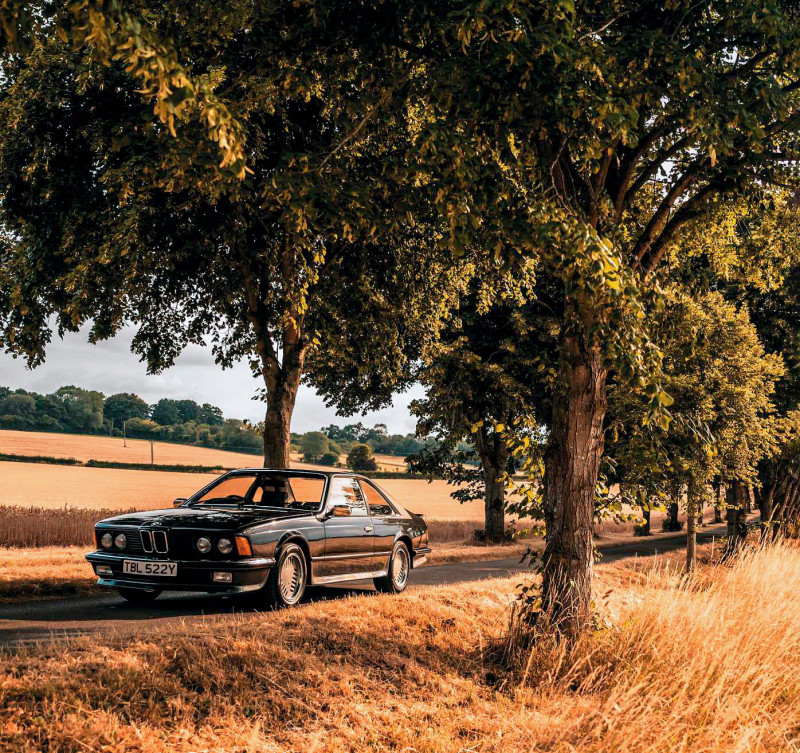
Only now it would be the world’s first car to feature a retractable glass roof. Triplex and sunroof firm Tudor came on board, although it would appear that they still invoiced for their work, albeit at a reduced rate. MGA quoted a total build cost of £20,000, with Gibbs promising BMW GB ‘…a unique package that will allow an open car – cabriolet – option at the touch of a button: no rag-tops or removable panels. What we have proposed has not, to our knowledge, been attempted before. In other words, this vehicle will be a “first” and will probably attract considerable technical interest.’
The small team was tasked with turning the bright red donor car into a showstopper in just 18 weeks. Former Porsche man, Stuttgart-based British designer Stephen Ferrarda, was responsible for working with MGA’s team to create the new look, while electrical systems engineer Stanley Daniels was the man who had to figure out how to make the roof work. Aside from anything else, the entire ensemble had to disappear into the boot without any significant loss of luggage room. No pressure. Alastair Millar Design Engineering was tasked with the geometry layouts and structural design.
As with all great leaps into the unknown, there were inevitable issues. Even so, the Observer BMW went from signed-off renderings to completed car in just 3½ months, more than 120 modifications being made to the 635CSi E24, many of them structural. As soon as the car arrived, 200kg of clay was heaped upon it while the definitive shape was arrived at. A giant template was then built and held in place via an ‘egg-box’ structure to form the mould to shape the new panels.
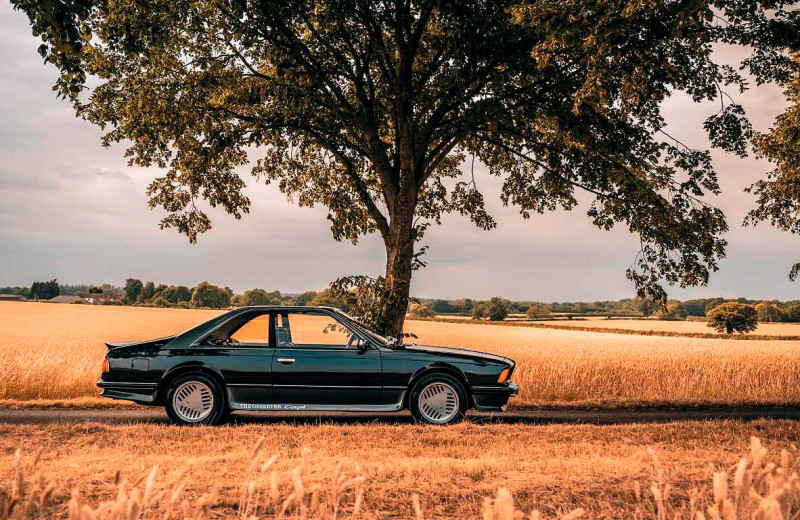
Ferrada’s design called for an integral roll-over bar, and a test rig was built in July 1982 to try out the precise workings of the roof: a complex tracking mechanism that allowed the glass roof panels and rear window, operated separately, to slide along a track into a shallow compartment housed inside the boot-lid (a much thicker and heavier bespoke item). The plan was ambitious and beset with headaches, not least the small matter of a batch of glass not meeting the tight tolerances of the slide-away mechanism. Another glass panel was broken by accident during the build. The MGA team worked 30 days straight to get the car ready for its big reveal, the real hero being Martin Collard: he ensured the car was painted at the last gasp while batting away food poisoning. The Observer Coupé was completed on 27 September 1982 and made quite the splash. Gibbs was quoted extensively in MGA’s press release. ‘We were treading on the frontiers of today’s styling and engineering practice,’ he claimed. ‘No-one before had used large moving laminated glass panels as a design feature. No-one before had overcome the problem of concealing such panels in the bodywork of the car when open. No-one before had tackled the systems and structural effect.’

The build cost had ballooned to more than £65,000 (not including the BMW!), but The Observer appeared happy according to documents from the time. Once the car was no longer of use, it was sold to the MGA principal for a pound, but that wasn’t quite the end of the story. A production run was mooted, correspondence with BMW GB stating that 50 would be made as a range-topper, and there’s a wealth of letters back and forth between MGA and enthusiastic dealers. The plan then was for a dozen cars to be converted, though expectations were soon ratcheted down. This prototype remains the only example. There was, however, one sizable hurdle that needed to vaulted first: the retractable roof didn’t work, or at least it didn’t stow away in the manner the promotional blurb implied – but then it was a prototype. On top of that, simmering resentment between MGA and one of its key subcontractors effectively ensured its fate. Even that wasn’t quite the end, though. A less modified 6-series with a roof comprised mostly of glass was proposed, complete with the Observer name because, well, there was a double meaning (such a glasshouse would ensure that you could ‘observe’ quite a lot). This clearly came to naught, as did the suggestion that BMW dealers could offer MGA styling accessories such as the front spoiler, side-skirts, and so on. All of these schemes were quietly dropped, but the BMW had clearly worked its magic given that it attracted interest from Jaguar, Vauxhall and Land Rover. By the early 1990s the firm had grown out of all recognition, producing a series of concept cars in addition to shaping production models such as the MGF (albeit with a few internal tweaks) and the Ford Escort RS Cosworth. Alumni included design stars Peter Horbury and Steve Harper, but it was all over by 1997.
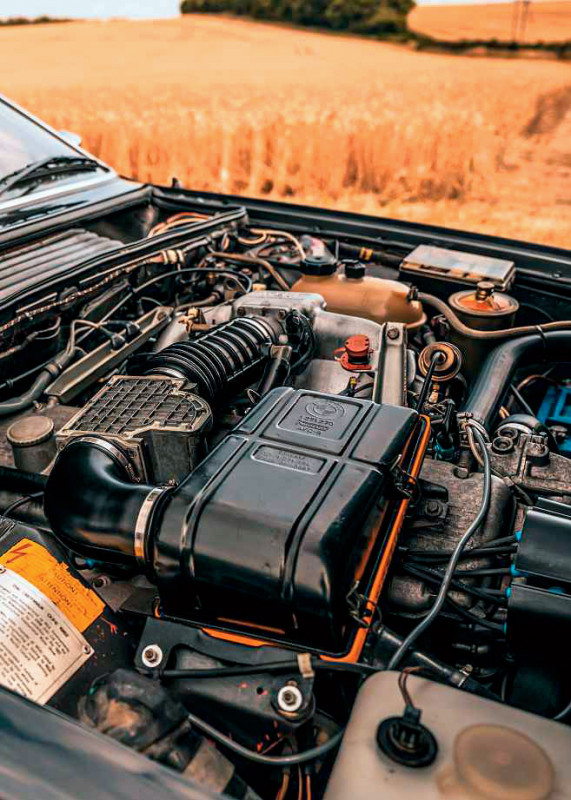
As for the first MGA show car, it was retained by Gibbs until the early 1990s. An email conversation with a subsequent keeper intimates that the retractable roof set-up was replaced with the current fixed glazed look roughly seven or eight years after it was built. Apparently, he was tired of rattles and draughts. Its current owner, Robert Dubsky, bought the car in ‘restored’ condition. A man steeped in exotica, he didn’t explicitly buy the car because of its history, more because he fancied a 6-series to smoke around in. He has since had it fettled to the nth degree. Up close, the profile of the E24-gen 6-series is much as you remember, only with oh-so-period mods. Of these, the bespoke front and rear spoilers, the side-skirts, the stick-on graphics, and the Centra Type 6 alloy wheels chain it to the 1980s. There’s just the right amount of wrong here, but you only really appreciate the car’s signature feature from inside. The cabin furniture is near-standard, yet the glazing treatment is anything but.

Overhead, a silkscreen-printed pattern is fused into the glass, principally to overcome the greenhouse effect of the sun. On this particularly bright and warm day, it is only partially successful. It doesn’t help that it’s also rocking black leather. At this juncture you wish the roof still retracted, if only to stop you being barbecued. As to how the car drives, well, it’s a properly sorted 6-series of old – one that has covered just 18,000 miles. For the most part it’s the strong, silent type. Even with your foot planted and the throttle wide open, it doesn’t get particularly vocal. The BMW is quick for its vintage, though, and the five-speed ’box has a relatively short throw across the gate. It’s all rather undramatic, but in a good way. There’s the mildest of mild understeer under power and a tightening of line when the throttle is closed. Lurid tail-out action would require provocation and, should you wish to indulge in such behaviour, it would be prudent to attempt it where there is plenty of run-off area. Make no mistake, this isn’t the sort of car you want to get out of shape. Somehow, you imagine you will need lightning quick reflexes to gather it all up again. Fortunately, the brakes scrub off speed rapidly and there’s plenty of pedal feel.
The 635CSi E24 is far from the heavy old duffer you might imagine, even though you are aware of the car’s heft. It’s worth remembering that the 6-series claimed three European Touring Car Championship titles in period, in addition to big wins in standalone events such as the Tourist Trophy. That’s a remarkable tally for a car that was decidedly not conceived with motor racing in mind. What surprises most about this one-of-a-kind strain, though, is that it doesn’t feel floppy. Despite having gone under the knife, there are no percussive creaks and groans. As is so often the way with this sort of thing, MGA promised a reality despite being unsure how to deliver it. Not all experiments prove their hypothesis, but you usually learn something anyway. Look at how many cars have glass roofs nowadays. Yes, this is a prototype with all that entails, but it’s hard not to be intrigued by this forgotten curio all the same.
THANKS TO David Goodwin, goodwin-business.co.uk
TECHNICAL DATA 1982 BMW 635CSi E24
- Engine M30B35 3430cc OHC straight-six, Bosch fuel injection
- Max Power 215bhp @ 5200rpm
- Max Torque 229lb ft @ 4000rpm
- Transmission Five-speed manual, rear-wheel drive
- Steering Recirculating ball, power-assisted
- Suspension Front: MacPherson struts, coil springs, anti-roll bar. Rear: semi-trailing arms, coil springs, telescopic dampers, anti-roll bar
- Brakes Vented discs
- Weight 1480kg
- Top speed 142mph
- 0-62mph 7.4sec
Clockwise, from above Standard E24 6-series dash is a late-70s masterpiece; full disclosure on the chassis plate; 3.5-litre six keeps things brisk; rear three-quarter is its most obviously different angle.
Facing page and above It’s a 635CSi E24, only subtly – and uniquely – different; design sketches detail the necessary structural changes; donor car was loaded with clay to make a mould for new panels.
Above, from far left Shark-like nose is a E24 6-series characteristic; black leather and a glass roof: not the ideal combination for a hot day; from the front, you’d never know.


